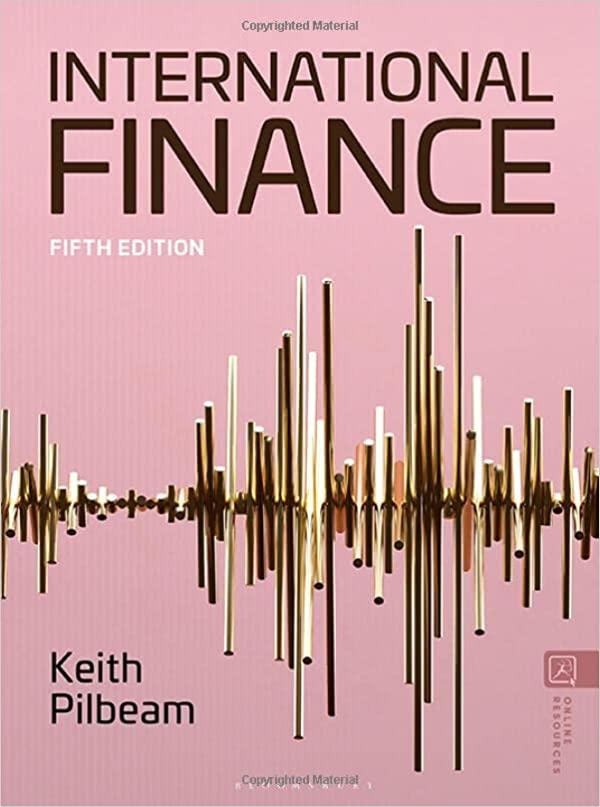Question
question 1 Some benefits of holding foreign equity compared to just holding domestic equity in a portfolio include... Group of answer choices Greater opportunity for
question 1
Some benefits of holding foreign equity compared to just holding domestic equity in a portfolio include...
Group of answer choices
Greater opportunity for higher returns
Greater protection against domestic inflation
Loss in Value from exchange rate risk
Greater diversification
question 2
Countries can be classified into emerging market based on whether ____
Group of answer choices
The country does not have a democracy
Only if most of its citizens are considered poor and a few wealthy according to the country standards
Its investable market capitalization is low relative to its most recent GNI figures
It is located in a low- or middle-income economy as defined by the World Bank
question 3
Some ways liquidity can be measured in a country's stock market include
Group of answer choices
Number of private stocks divided by public stocks
How many industries exist in the country
Stock Prices
Turnover ratio
question 4
What are the types of American Depository Receipts (ADRs) and how are these ADRs structured?
Group of answer choices
Level II
[ Choose ] This type of ADR program is a private placement of equity to Qualified Institutional Buyers (QIBs). The most basic type of ADR program. The issuer is not seeking to raise new equity capital in the U.S. and/or cannot list on NASDAQ. The issuer is not seeking to raise new equity capital in the U.S. and ADRs can be listed on NASDAQ, AMEX, or NYSE. The Issuer floats a public offering of new equity in the U.S. and lists the ADRs on NASDAQ, AMEX, or NYSE
Level I
[ Choose ] This type of ADR program is a private placement of equity to Qualified Institutional Buyers (QIBs). The most basic type of ADR program. The issuer is not seeking to raise new equity capital in the U.S. and/or cannot list on NASDAQ. The issuer is not seeking to raise new equity capital in the U.S. and ADRs can be listed on NASDAQ, AMEX, or NYSE. The Issuer floats a public offering of new equity in the U.S. and lists the ADRs on NASDAQ, AMEX, or NYSE
Level III
[ Choose ] This type of ADR program is a private placement of equity to Qualified Institutional Buyers (QIBs). The most basic type of ADR program. The issuer is not seeking to raise new equity capital in the U.S. and/or cannot list on NASDAQ. The issuer is not seeking to raise new equity capital in the U.S. and ADRs can be listed on NASDAQ, AMEX, or NYSE. The Issuer floats a public offering of new equity in the U.S. and lists the ADRs on NASDAQ, AMEX, or NYSE
Rule 144A
[ Choose ] This type of ADR program is a private placement of equity to Qualified Institutional Buyers (QIBs). The most basic type of ADR program. The issuer is not seeking to raise new equity capital in the U.S. and/or cannot list on NASDAQ. The issuer is not seeking to raise new equity capital in the U.S. and ADRs can be listed on NASDAQ, AMEX, or NYSE. The Issuer floats a public offering of new equity in the U.S. and lists the ADRs on NASDAQ, AMEX, or NYSE
question 5
The typical benchmarks to measure performance of stocks and portfolios are_________
Group of answer choices
World Equity Benchmarks (WEBS)
Indexes
Country Funds
Global Registered Shares (GRS)
Exchange Traded Funds (ETFs)
Step by Step Solution
There are 3 Steps involved in it
Step: 1

Get Instant Access to Expert-Tailored Solutions
See step-by-step solutions with expert insights and AI powered tools for academic success
Step: 2

Step: 3

Ace Your Homework with AI
Get the answers you need in no time with our AI-driven, step-by-step assistance
Get Started


